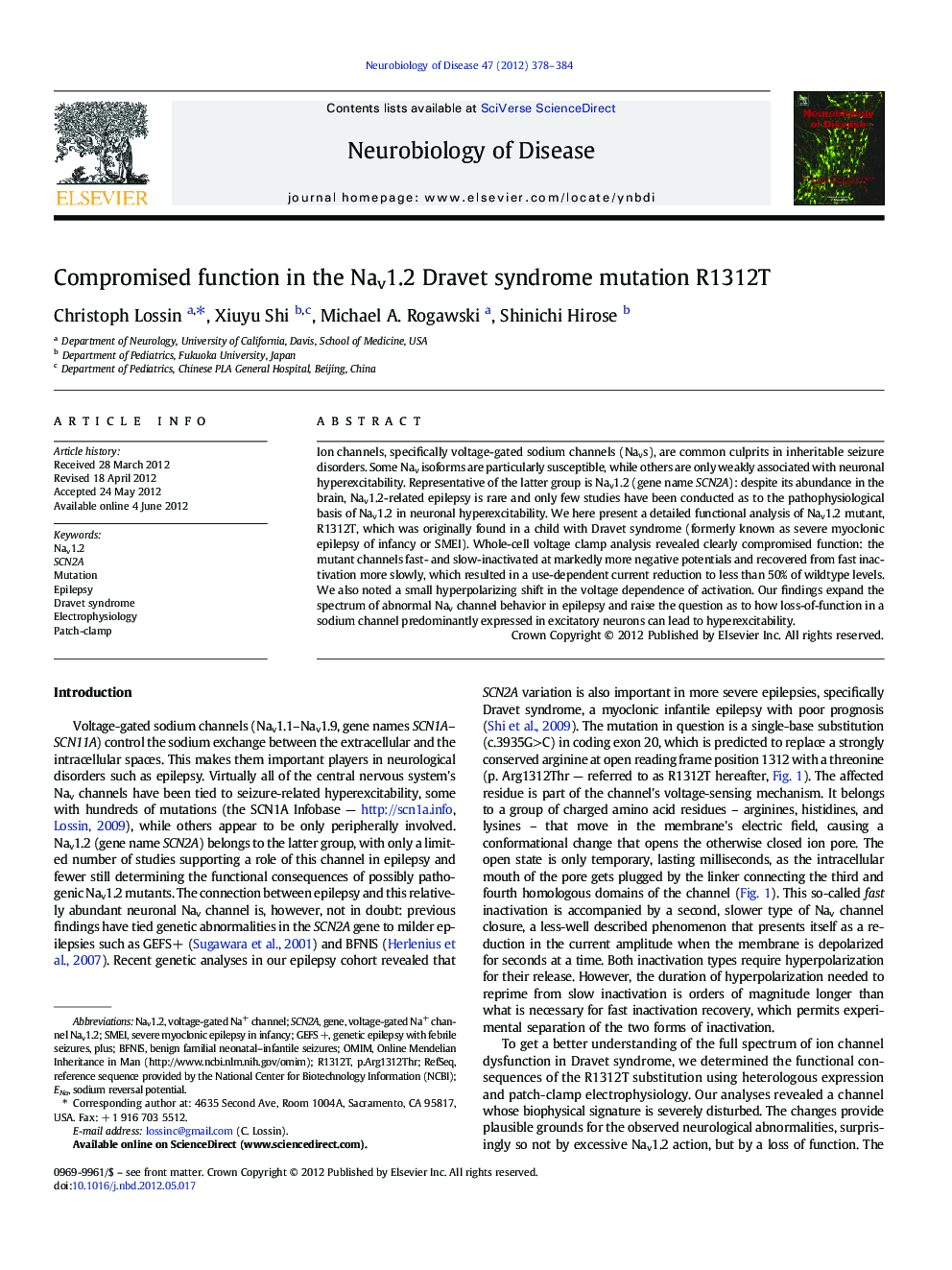| Article ID | Journal | Published Year | Pages | File Type |
|---|---|---|---|---|
| 6022786 | Neurobiology of Disease | 2012 | 7 Pages |
Abstract
Ion channels, specifically voltage-gated sodium channels (Navs), are common culprits in inheritable seizure disorders. Some Nav isoforms are particularly susceptible, while others are only weakly associated with neuronal hyperexcitability. Representative of the latter group is Nav1.2 (gene name SCN2A): despite its abundance in the brain, Nav1.2-related epilepsy is rare and only few studies have been conducted as to the pathophysiological basis of Nav1.2 in neuronal hyperexcitability. We here present a detailed functional analysis of Nav1.2 mutant, R1312T, which was originally found in a child with Dravet syndrome (formerly known as severe myoclonic epilepsy of infancy or SMEI). Whole-cell voltage clamp analysis revealed clearly compromised function: the mutant channels fast- and slow-inactivated at markedly more negative potentials and recovered from fast inactivation more slowly, which resulted in a use-dependent current reduction to less than 50% of wildtype levels. We also noted a small hyperpolarizing shift in the voltage dependence of activation. Our findings expand the spectrum of abnormal Nav channel behavior in epilepsy and raise the question as to how loss-of-function in a sodium channel predominantly expressed in excitatory neurons can lead to hyperexcitability.
Keywords
Related Topics
Life Sciences
Neuroscience
Neurology
Authors
Christoph Lossin, Xiuyu Shi, Michael A. Rogawski, Shinichi Hirose,
